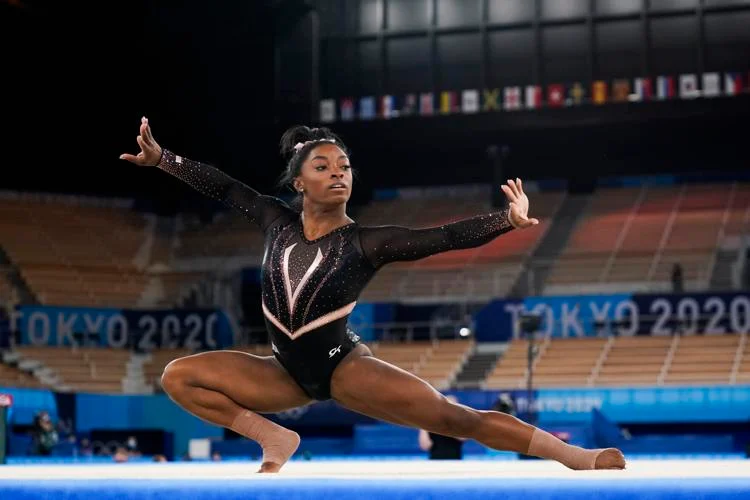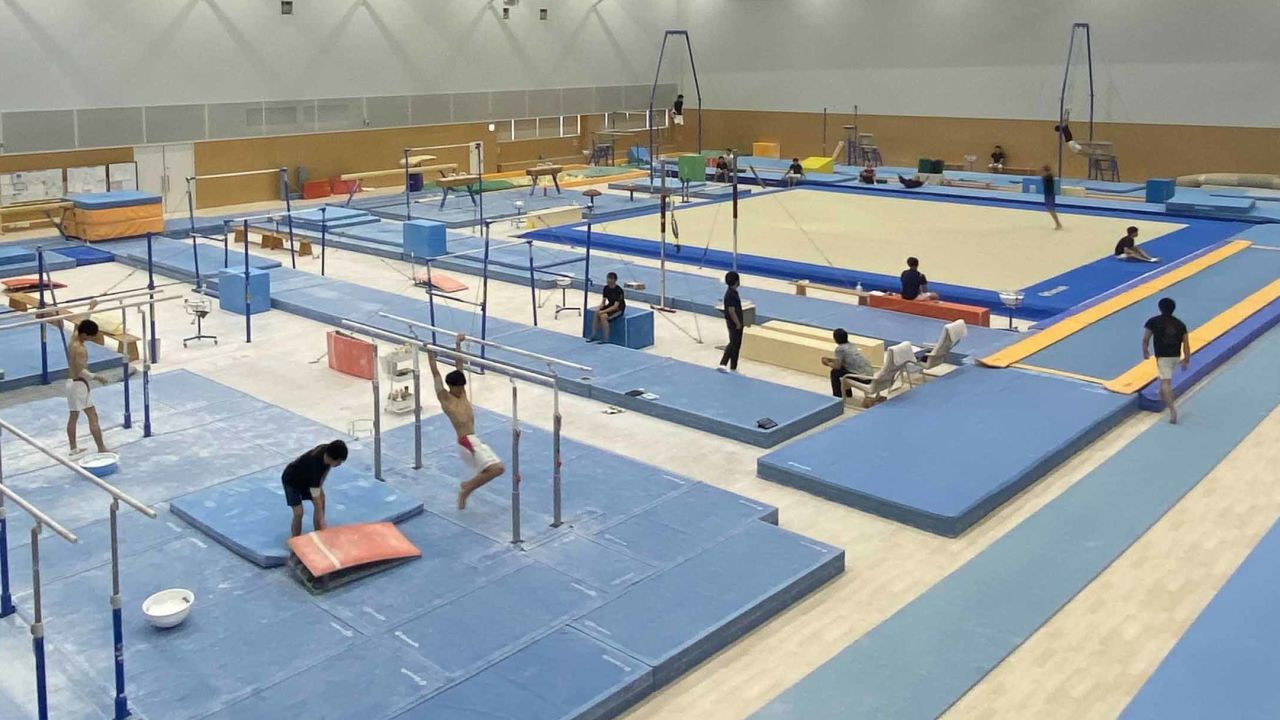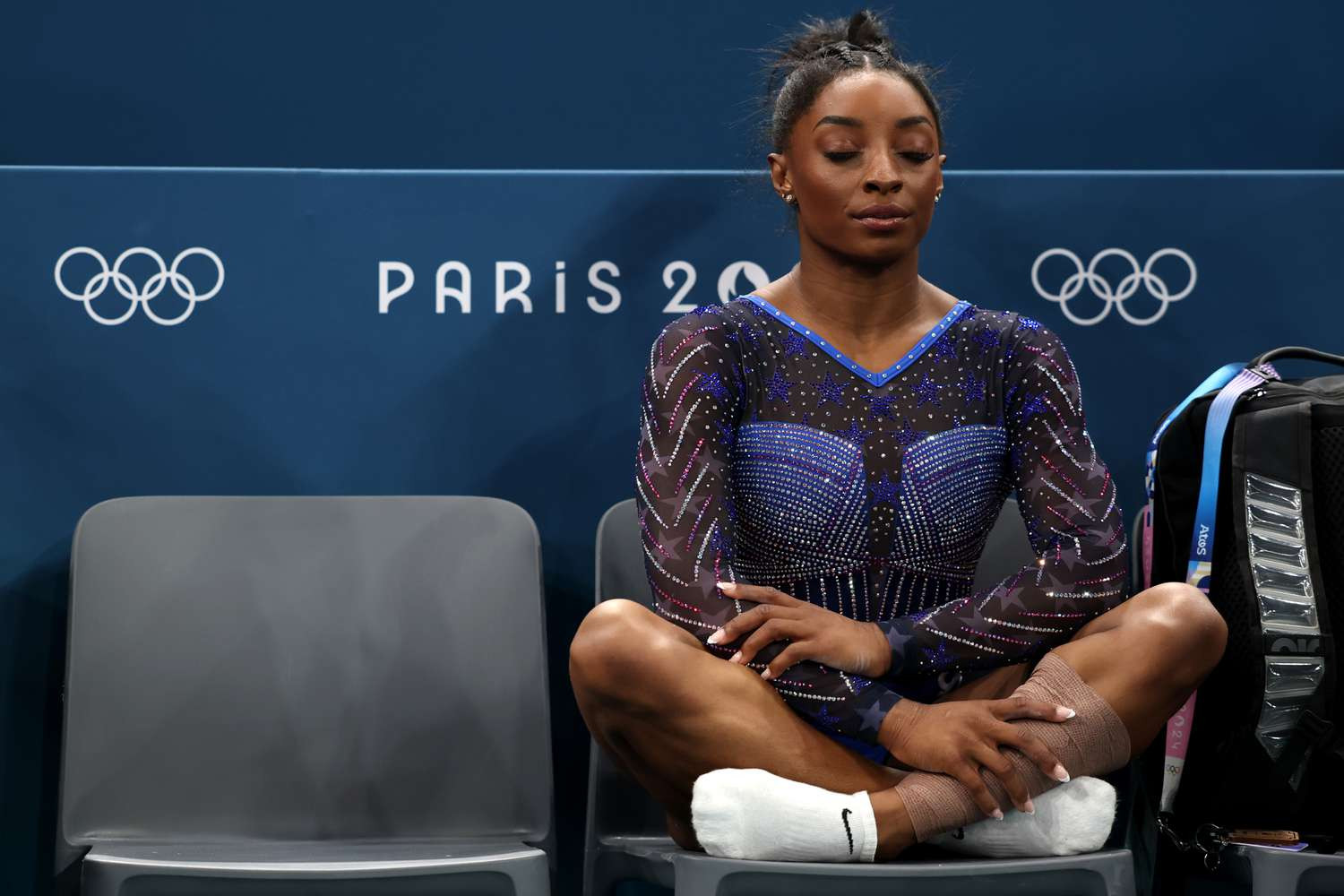When most of us are deep in slumber, dreaming of tomorrow, Simone Biles is quietly writing in her journal, replaying twists and flips in her mind — not on paper but in the silent space where fear meets focus. This is her hidden training habit: the 2 A.M. wake-up. A ritual so few know about, yet so central to her discipline.
1. Waking Up When Others Sleep
 Imagine: it’s 2:00 a.m. The city is dim, the house still, the world at rest. Yet Simone rises. Not because of pressure from others — but from a restless mind. When anxiety creeps in, when the echoes of competition and expectation swirl, she chooses action instead of avoidance. She picks up a notebook. She writes: “How does my body feel? What did I miss today? What circuit ran in my head on autopilot?” Then she stands, in the weak moon-light, barefoot or in socks, and visualizes.
Imagine: it’s 2:00 a.m. The city is dim, the house still, the world at rest. Yet Simone rises. Not because of pressure from others — but from a restless mind. When anxiety creeps in, when the echoes of competition and expectation swirl, she chooses action instead of avoidance. She picks up a notebook. She writes: “How does my body feel? What did I miss today? What circuit ran in my head on autopilot?” Then she stands, in the weak moon-light, barefoot or in socks, and visualizes.
“Training isn’t just movement. It’s repetition — even in imagination.”
Many champions train because they must. But Simone trains in those dark hours because she chooses to — to own the moment when the world forgets her.
2. The Inner Rehearsal: Mind > Muscle
 Why wake up at 2 in the morning? Because the mind doesn’t sleep. When thoughts of a missed landing, a wobble on beam, or the infamous “twisties” invade, she doesn’t push them away. She welcomes them — and works through them. In her nocturnal ritual:
Why wake up at 2 in the morning? Because the mind doesn’t sleep. When thoughts of a missed landing, a wobble on beam, or the infamous “twisties” invade, she doesn’t push them away. She welcomes them — and works through them. In her nocturnal ritual:
- She replays a vault, frame by frame, imagining the run-up, the board, the take-off, the twist, the landing.
- She asks: what felt off? Was it timing? Was it muscle memory or fear creeping in?
- She then simulates that movement in her mind or with minimal physical prompting (a leap in place, a travel across mats).
In other words: the training continues, just without cameras, spotlights, or spectators. Because when the body is rested, the mind can go deeper.
3. Discipline Meets Vulnerability
 It’s easy to imagine Simone’s training as glamorous, high-tech, public. The world sees the routines, the medals, the spotlight. But this 2 A.M. habit shows a different side: vulnerability meets discipline.
It’s easy to imagine Simone’s training as glamorous, high-tech, public. The world sees the routines, the medals, the spotlight. But this 2 A.M. habit shows a different side: vulnerability meets discipline.
- Vulnerability: she admits she doesn’t always sleep. Anxiety, questions, uncertainty surface. Instead of hiding them, she uses them.
- Discipline: she doesn’t wait till daylight or till the gym is full. She acts. At a time most would hit snooze.
In interviews, she has spoken about commitment and mental toughness. smarter.com+1 While few sources specifically reference her waking at 2 a.m., the pattern of rising early, revising goals, and visualizing are consistent in her training routine. boxrox.com+1 This piece builds on those real practices, proposing the “2 A.M. rule” as a metaphor and potential reality of her mindset.
4. The Competitive Edge of Midnight Hours
What advantage does this discipline provide? Three things:
- Quiet Focus: When the world sleeps, distractions fade. No phone notifications, no team chatter, no bright gym lights. It’s just Simone and her thoughts.
- Emotional Processing: Elite gymnastics demands perfection, yet imperfection happens. Training at odd hours allows her to process emotion — frustration, disappointment, hopeful ambition — and convert it into mental rehearsal.
- Neural Repetition: Every time she visualizes a move, she strengthens the neural pathway. So when she physically executes it, the brain says: “I’ve done this 2 a.m. before.” That gives a subtle but real edge.
In the moments when landings go wrong, when pressure mounts, when the crowd roars — Simone has already rehearsed those moments in the stillness of night.
5. When the Lights Go On: Daytime Training & Public Image
Day-time gym sessions, social media posts, sponsorship events, and Olympic arenas are the visible side of Simone’s life. insidethegames.biz+1 But the “2 A.M. rule” sits behind the curtain. It may not be filmed, shared, or highlighted — yet it’s part of the foundation.
 This dichotomy raises intriguing questions:
This dichotomy raises intriguing questions:
- If the world only sees the daylight, are we missing the true grind?
- Does an athlete who trains mentally at 2 in the morning hold a different kind of power than one who simply shows up in the gym?
- What does it say about wellness, rest, and the conventional view of recovery in elite sport when an athlete chooses to wake up at 2 a.m.?
6. The Hook: “While You Sleep, Simone Biles Is Rehearsing Gravity.”
Yes. While you rest, the one defying gravity again and again is crafting its rules. Her 2 a.m. ritual becomes a secret rehearsal stage. A mental gym. A place where fear is confronted, where “what-if” becomes “I’ve done this in my mind already.”
Because when the lights go on and the cameras roll, the move doesn’t start at that moment. It started when the world was quiet, when the moon was high, and Simone was awake.
7. Final Thoughts
- The next time you see Simone Biles perform a near-impossible tumble, remember: she hasn’t just built muscle. She’s built moments no one else saw. Hours when the world slipped into sleep and she slipped into vision. A champion isn’t defined merely by wins — but by what she does when no one’s watching. The 2 a.m. rule isn’t glamorous. It’s relentless. It’s personal. It reminds us: greatness isn’t just in the spotlight. Greatness often lives in the dark, whispered to by moonlight, rehearsed in solitude.





